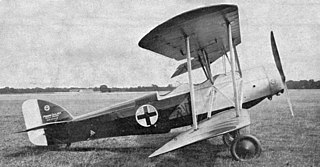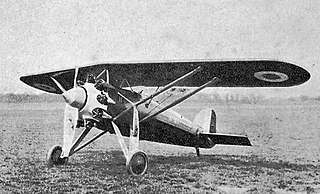
Aéroplanes Morane-Saulnier was a French aircraft manufacturing company formed in October 1911 by Raymond Saulnier (1881–1964) and the Morane brothers, Léon (1885–1918) and Robert (1886–1968). The company was taken over and diversified in the 1960s.

The Morane-Saulnier M.S.225 was a French fighter aircraft of the 1930s. It was produced in limited quantities to be used as a transitional aircraft between the last of the biplanes and the first monoplane fighters.

The Morane-Borel monoplane was an early French single-engine, single-seat aircraft. It was flown in several European air races.

Etablissements Borel was a French aircraft manufacturer of the early twentieth century. It was founded by Gabriel Borel (1880–?1960) and manufactured a number of monoplane designs between 1909 and 1914. The factory, located at Mourmelon was temporarily forced to close when the outbreak of World War I saw most of its workers conscripted into the army, but Borel re-opened in November 1915 to produce military aircraft for France under licence from other manufacturers including Caudron, Nieuport and SPAD. In 1918, Borel was restructured as the Société Générale des Constructions Industrielles et Mécaniques (SGCIM) and attempted to re-market one of its torpedo bomber designs as a civil transport. However, neither this nor two new-generation fighter designs were able to keep the company in business.

The Morane-Saulnier G was a two-seat sport and racing monoplane produced in France before the First World War. It was a development of the racing monoplanes designed by Léon Morane and Raymond Saulnier after leaving Borel and, like its predecessors, was a wire-braced, shoulder-wing monoplane. Construction was of fabric-covered wood throughout, except for the undercarriage struts which were of steel tube.

The Morane-Saulnier AI was a French parasol-wing fighter aircraft produced by Morane-Saulnier during World War I.
The Morane-Saulnier AF, also known as the Morane-Saulnier Type AF and the MoS 28 was a French First World War single-seat biplane fighter prototype from 1917.

The Morane-Saulnier AR was a trainer aircraft produced in France during and after the First World War. Developed from the Morane-Saulnier LA reconnaissance aircraft, it was a wire-braced parasol-wing monoplane of conventional design with two open cockpits in tandem and cross-axle-style tailskid undercarriage. Construction was mostly of fabric-covered wood, but the forward fuselage was skinned in metal.

The Morane-Saulnier H was an early aircraft first flown in France in the months immediately preceding the First World War; it was a single-seat derivative of the successful Morane-Saulnier G with a slightly reduced wingspan Like the Type G, it was a successful sporting and racing aircraft: examples serving with the French army were used in the opening phases of the war.

The Morane-Saulnier T was a French biplane reconnaissance aircraft in 1916 and produced in small numbers during World War I.

The Morane-Saulnier MS.138 was a military trainer aircraft produced in France in the late 1920s,

The Morane-Saulnier MS.147 and its derivatives, the MS.148 and MS.149 were a family of trainer aircraft produced in France in the late 1920s for civil and military use. They were derived from other machines in Morane-Saulnier's successful line of monoplane trainers, combining the wire-braced parasol wing of the MS.138 with the fuselage and undercarriage of the MS.130.

The Morane-Saulnier MS.570 was a civil utility aircraft produced in small numbers in France in the late 1940s.

The Morane-Saulnier MS.140 was designed in France as an ambulance aircraft with the ability to operate from small fields and which could double as a trainer. Only one of these single engine, wooden biplanes was built, first flying about 1927.

The Morane-Saulnier MS.350 was a French aerobatic trainer flown in 1936. Only one was built but it had a long career, flying post-war until the 1960s.
The Morane-Saulnier MS.300 and MS.301 were French parasol wing introductory trainer aircraft, first flown in 1930. They differed only in engine type. Neither reached production but were developed into two similar trainers, the MS.230 and MS.315, which were made in large numbers.
The Morane-Saulnier MS.152 was a French multi-purpose aircraft built in 1928. It did not go into production.

The Morane-Saulnier MS.221 was a French fighter aircraft, built in 1928 to compete for a government contract in the "Jockey" programme. Two were built, one of which was progressively modified to increase its speed, but in 1930 the light fighter concept was abandoned.

The Morane-Saulnier MS.224 was a prototype fighter plane built by Morane-Saulnier in the early 1930s.
The Morane-Saulnier B was an early French single-seat training and sports monoplane.
















